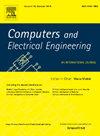Secure lightweight digital twin (DT) technology for seamless wireless communication in vehicular ad hoc network
IF 4
3区 计算机科学
Q1 COMPUTER SCIENCE, HARDWARE & ARCHITECTURE
引用次数: 0
Abstract
Security in VANETs (Vehicular Ad Hoc Networks) is crucial due to the inherent vulnerabilities in wireless communication. These networks face several security challenges, including authentication, privacy protection, and secure data transmission. Authentication issues arise from the dynamic nature of vehicular networks, where vehicles need to authenticate each other and entities like roadside units securely. The challenges include GPS spoofing, where attackers manipulate location data to mislead vehicles; Sybil attacks, where a single node illegitimately claims multiple identities to disrupt network operations; and Denial of Service (DoS) attacks, which overwhelm the network, rendering it unavailable for legitimate users. Additionally, key management for secure encryption, replay attacks where previously transmitted messages are maliciously reused, and jamming attacks that disrupt wireless signals are notable threats. To overcome the issue in VANET wireless communication this paper proposed DT-LHBC (Digital Twin Lightweight Hashing Blockchain Cryptography) into VANETs (Vehicular Ad-Hoc Networks) to enhance security and efficiency in vehicular communication systems. DT-LHBC combines advanced cryptographic techniques with digital twin technology to ensure secure data transmission and communication integrity across dynamic vehicular environments. With the implementation of a digital twin technology cryptography model of hashing-based blockchain (LHBC) is integrated to achieve effective wireless communication. Results demonstrate DT-LHBC's effectiveness in mitigating various security threats, including Sybil attacks, Denial of Service (DoS) attacks, and Message Tampering, achieving up to 98 % accuracy in attack detection. Despite challenges in optimizing cryptographic speeds and addressing GPS Spoofing vulnerabilities, DT-LHBC reduces blockchain latency to as low as 12 milliseconds and maintains a high transaction throughput of 500 transactions per second.
求助全文
约1分钟内获得全文
求助全文
来源期刊

Computers & Electrical Engineering
工程技术-工程:电子与电气
CiteScore
9.20
自引率
7.00%
发文量
661
审稿时长
47 days
期刊介绍:
The impact of computers has nowhere been more revolutionary than in electrical engineering. The design, analysis, and operation of electrical and electronic systems are now dominated by computers, a transformation that has been motivated by the natural ease of interface between computers and electrical systems, and the promise of spectacular improvements in speed and efficiency.
Published since 1973, Computers & Electrical Engineering provides rapid publication of topical research into the integration of computer technology and computational techniques with electrical and electronic systems. The journal publishes papers featuring novel implementations of computers and computational techniques in areas like signal and image processing, high-performance computing, parallel processing, and communications. Special attention will be paid to papers describing innovative architectures, algorithms, and software tools.
 求助内容:
求助内容: 应助结果提醒方式:
应助结果提醒方式:


